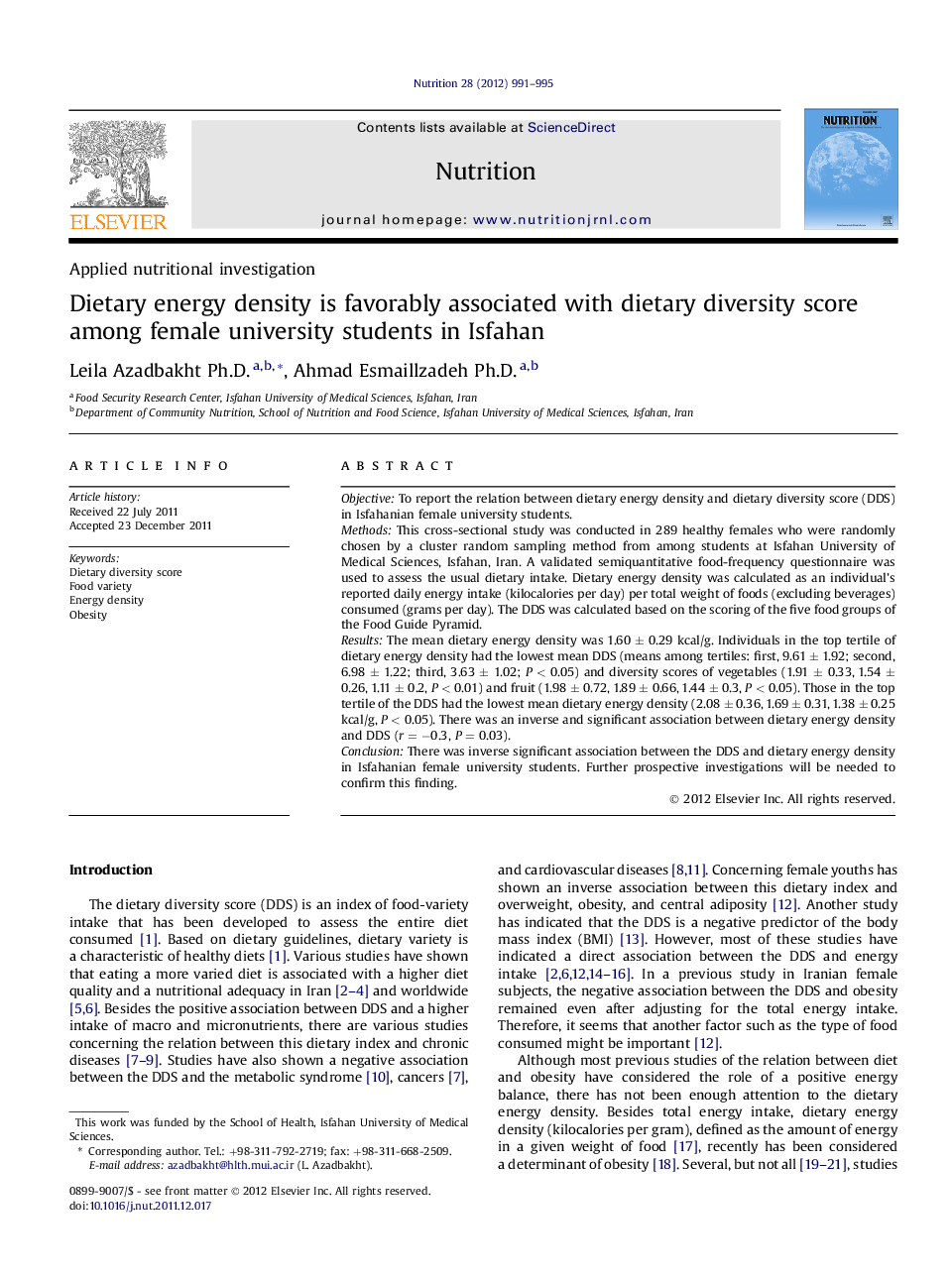| Article ID | Journal | Published Year | Pages | File Type |
|---|---|---|---|---|
| 6090237 | Nutrition | 2012 | 5 Pages |
ObjectiveTo report the relation between dietary energy density and dietary diversity score (DDS) in Isfahanian female university students.MethodsThis cross-sectional study was conducted in 289 healthy females who were randomly chosen by a cluster random sampling method from among students at Isfahan University of Medical Sciences, Isfahan, Iran. A validated semiquantitative food-frequency questionnaire was used to assess the usual dietary intake. Dietary energy density was calculated as an individual's reported daily energy intake (kilocalories per day) per total weight of foods (excluding beverages) consumed (grams per day). The DDS was calculated based on the scoring of the five food groups of the Food Guide Pyramid.ResultsThe mean dietary energy density was 1.60 ± 0.29 kcal/g. Individuals in the top tertile of dietary energy density had the lowest mean DDS (means among tertiles: first, 9.61 ± 1.92; second, 6.98 ± 1.22; third, 3.63 ± 1.02; P < 0.05) and diversity scores of vegetables (1.91 ± 0.33, 1.54 ± 0.26, 1.11 ± 0.2, P < 0.01) and fruit (1.98 ± 0.72, 1.89 ± 0.66, 1.44 ± 0.3, P < 0.05). Those in the top tertile of the DDS had the lowest mean dietary energy density (2.08 ± 0.36, 1.69 ± 0.31, 1.38 ± 0.25 kcal/g, P < 0.05). There was an inverse and significant association between dietary energy density and DDS (r = â0.3, P = 0.03).ConclusionThere was inverse significant association between the DDS and dietary energy density in Isfahanian female university students. Further prospective investigations will be needed to confirm this finding.
